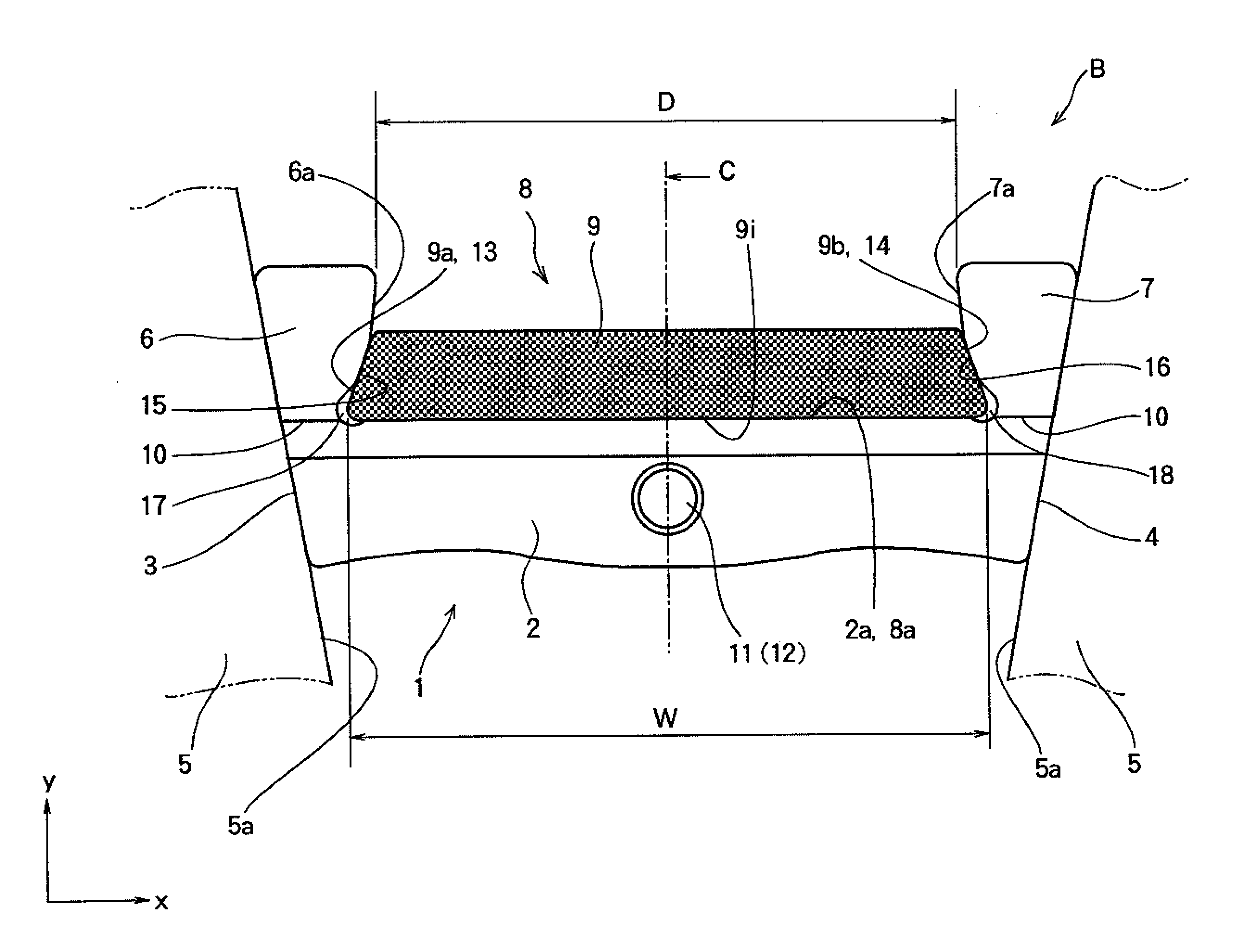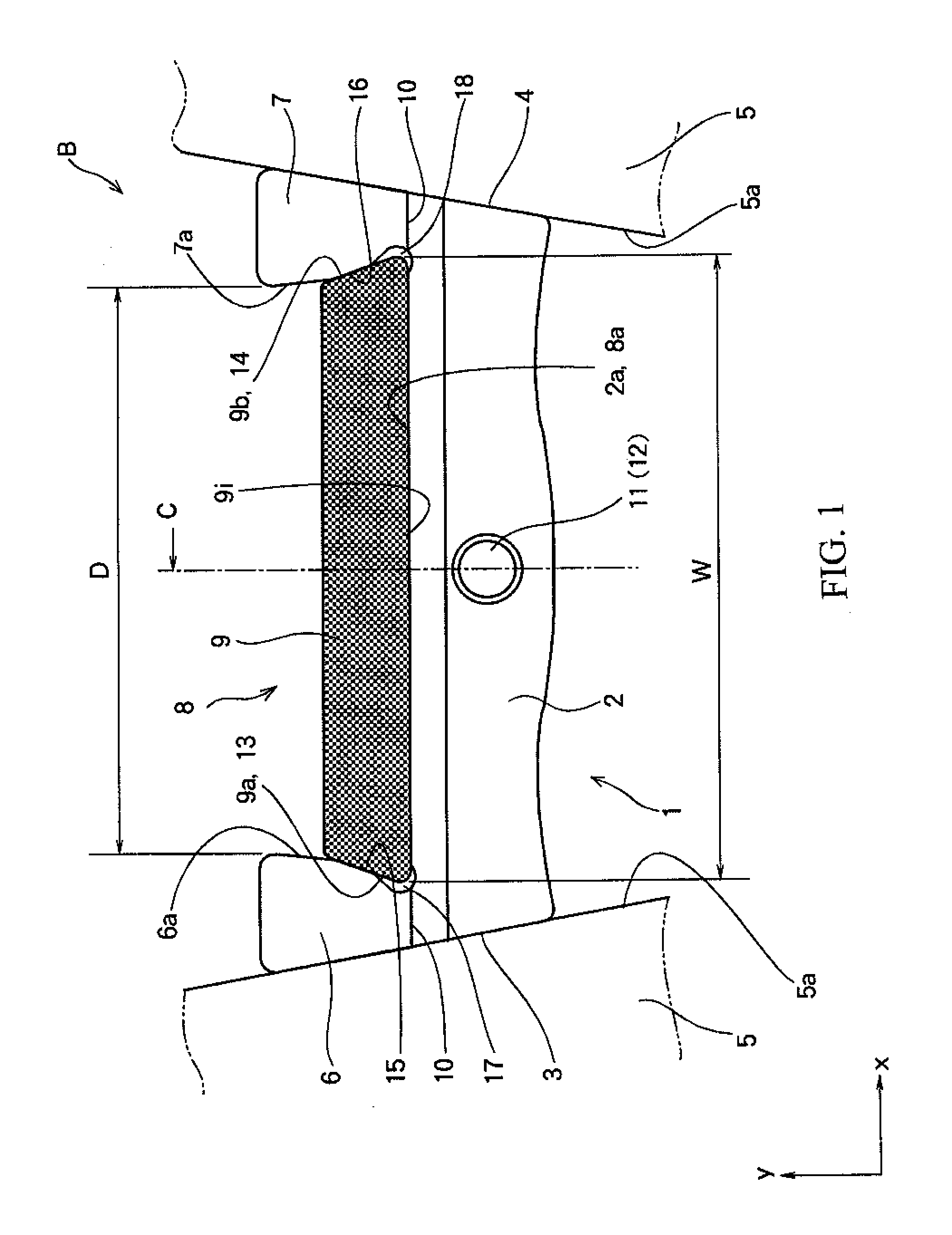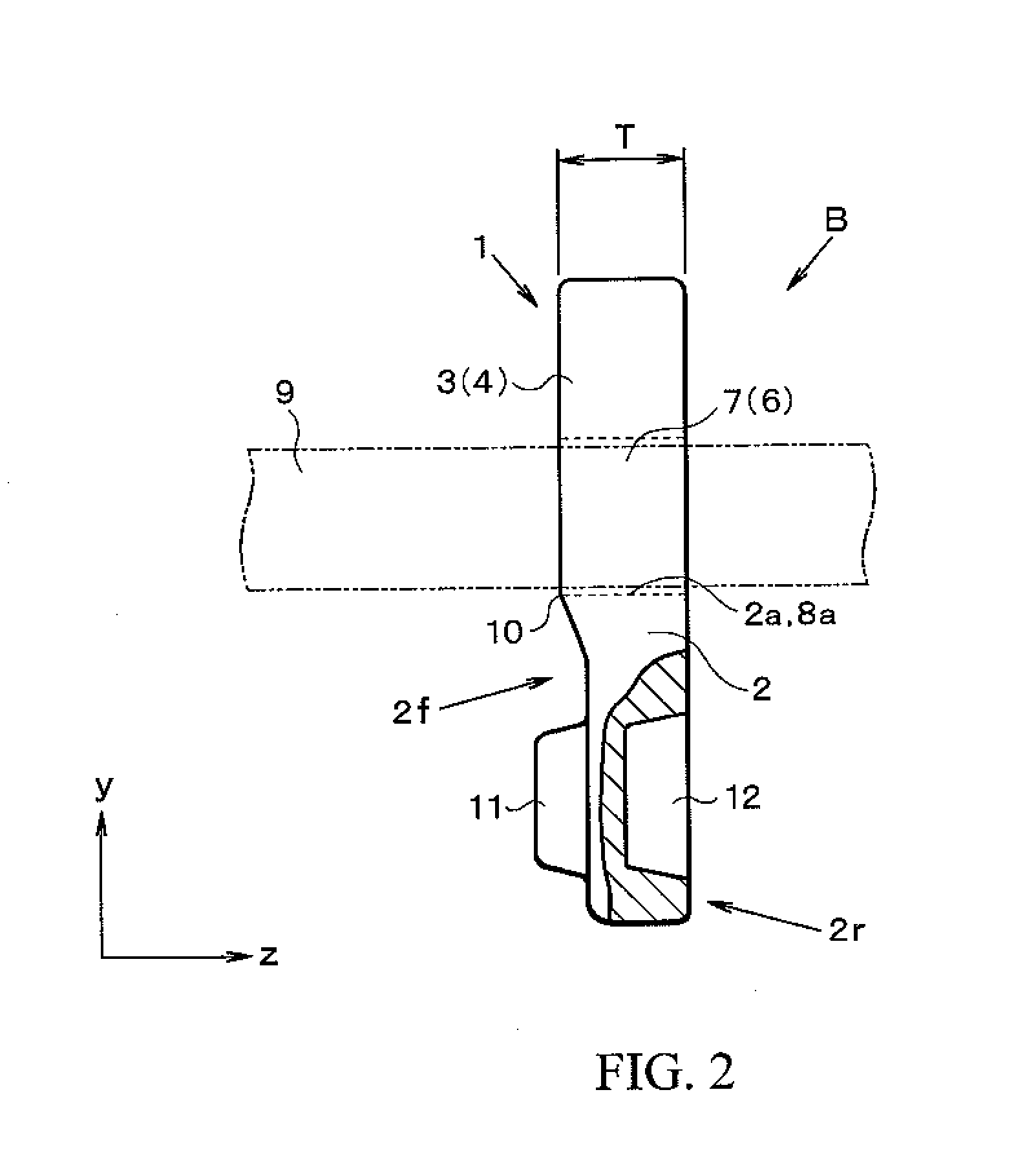Push type driving belt
a driving belt and push-type technology, applied in the direction of driving belts, belts/chains/gearings, v-belts, etc., can solve the problems of uneven application of load derived from a tension of rings or the like to the saddle face of elements, affecting and inevitably occurring slippage between singly layered rings. to achieve the effect of improving the power transmission efficiency of driving belts
- Summary
- Abstract
- Description
- Claims
- Application Information
AI Technical Summary
Benefits of technology
Problems solved by technology
Method used
Image
Examples
Embodiment Construction
[0030]Next, the present invention will be explained in more detail with reference to the accompanying figures. First of all, a structure of the push type driving belt B of the present invention will be explained with reference to FIGS. 1 and 2. For example, the push type driving belt B is applied to a drive pulley (i.e., an input shaft pulley) and a driven pulley (i.e., an output shaft pulley) of a belt-type continuously variable transmission for the purpose of transmitting a torque between those pulleys. According to the present invention, an element 1 is a plate member made of metal, for example. The element 1 comprises a main body (or a base portion) 2, and both side faces 3 and 4 formed on width ends (i.e., in the direction of x-axis in FIG. 1) of the main body 2 are inclined or tapered. The side faces 3 and 4 thus inclined are contacted frictionally with a (V-shaped) groove 5a of a pulley 5 to transmit the torque.
[0031]Columns 6 and 7 are erected on the width ends of the main b...
PUM
 Login to View More
Login to View More Abstract
Description
Claims
Application Information
 Login to View More
Login to View More - R&D
- Intellectual Property
- Life Sciences
- Materials
- Tech Scout
- Unparalleled Data Quality
- Higher Quality Content
- 60% Fewer Hallucinations
Browse by: Latest US Patents, China's latest patents, Technical Efficacy Thesaurus, Application Domain, Technology Topic, Popular Technical Reports.
© 2025 PatSnap. All rights reserved.Legal|Privacy policy|Modern Slavery Act Transparency Statement|Sitemap|About US| Contact US: help@patsnap.com



